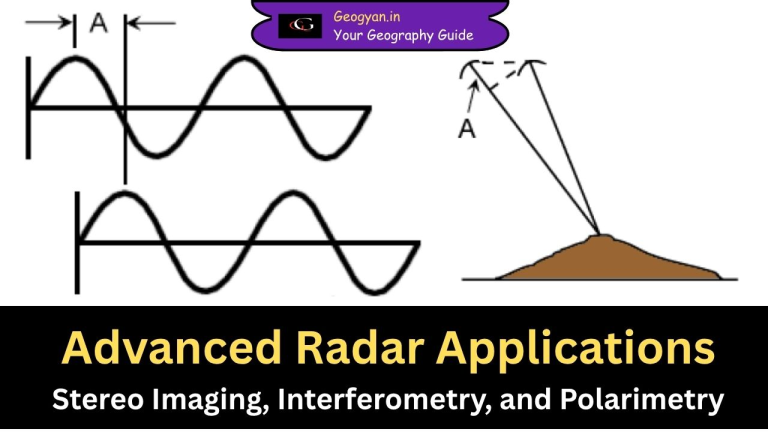Estimated reading time: 11 minutes
Introduction
The Indo Gangetic Plain, also known as the Northern plains or North Indian River Plain, is a vast and fertile landmass covering most of northern and eastern India, parts of Pakistan, southern Nepal, and all of Bangladesh. It gets its name from the two rivers that flow into it, the Indus and the Ganges.
This region is home to people of various religions and is surrounded by the Himalayas to the north, the Vindhya and Satpura Range to the south, the Chota Nagpur Plateau, and the Iranian Plateau to the west. It is also one of the most populated areas in the world, with over 1/7th of the global population.
The Great Plain of North India lies to the south of the Himalayas and to the north of the peninsula. The Indo-Gangetic Plain, also known as the Indo-Gangetic Brahmaputra plain, is a vast and level expanse that has been shaped by the accumulation of sediment carried by three major river systems: the Indus, Ganga, and Brahmaputra.
This expansive plain holds the distinction of being the world’s largest continuous stretch of alluvial soil, which has been deposited over time by numerous rivers, resulting in its unique geographical characteristics. The plains are flat, making them suitable for irrigation through canals, and they have abundant groundwater sources.
These plains are heavily cultivated and among the most intensely farmed areas globally. The primary crops grown here are rice and wheat, which are cultivated in rotation. Other important crops include maize, sugarcane, and cotton. Due to their high population density, the Indo-Gangetic plains are among the most densely populated regions on Earth.
Origin of the Indo-Gangetic Plain
The formation of the Indo-Gangetic Plain is widely believed to be the result of the filling of a deep depression between the Peninsular and Himalayan regions. Different theories have been proposed regarding its origin and how it was filled.
One theory by Wadia suggests that these plains were initially a deep depression or furrow between the Peninsula and the mountain region.
Another theory by Edward Suess, an Austrian geologist, suggests that a “foredeep” was formed in front of the rising Himalayas as they encountered the solid landmass of the Peninsula. This foredeep acted like a large syncline where sediment brought by rivers from the Himalayas and the Peninsula was deposited. Over time, this sediment filled the foredeep, resulting in the formation of the Great Plain of North India.
However, Sir Sydney Burrard suggested that beneath the alluvial sediment of the Indo-Gangetic region, there exists a profound rift or fracture in the Earth’s sub-crust that has been filled with sediment. These sunken tracts are known as “Rift Valleys.” According to Burrard, the rift valley between the Himalayan ranges and the Peninsula, which gave rise to this plain, was about 2,400 km long and several hundred meters deep. He also described other rift valleys in the Himalayan region as well as in the Narmada and Tapi rivers in Peninsular India.
Some scholars, including Hayden and R.D. Oldham, along with geologists from the Geological Survey of India, do not support Burrard’s view of the Indo-Gangetic depression. They argue that there is no evidence of a rift valley at the northern edge of the Peninsula, and such a vast rift valley is unlikely.
According to recent views expressed by many geologists and geographers, sediment deposited at the bed of the ancient Tethys Sea was folded and warped due to the northward movement of the Peninsula. This resulted in the formation of the Himalayas and a trough to the south, which eventually became the Indo-Gangetic Plain.
Geomorphology of the Indo-Gangetic Plain
The Indo-Gangetic plains stretch alongside the Himalayas, from Jammu and Kashmir to Assam, covering a large part of northern and eastern India. The plains cover an area of 700,000 square kilometers and vary in width, ranging from several hundred kilometers across their length. The major rivers in this system are the Ganga, Indus, and their tributaries like Beas, Yamuna, Gomti, Ravi, Chambal, Sutlej, and Chenab.
The Indo-Gangetic Plain or Great Plains can be divided into four main parts:
1. The Bhabhar belt
This belt is located next to the foothills of the Himalayas and consists of boulders and pebbles carried by river streams. The high porosity of this belt allows the streams to flow underground. The Bhabhar belt is generally narrow, about 7-15 kilometers wide.
2. The Terai belt
Adjacent to the Bhabhar region, the Terai belt is composed of newer alluvial deposits. The underground streams resurface in this region. It is a very moist area with dense forests and receives heavy rainfall throughout the year. It is also home to a variety of wildlife.


3. The Bangar belt
This belt is formed by older alluvial deposits and creates the alluvial terrace of the floodplains. In the Gangetic plains, it appears as a low upland covered by laterite deposits.
4. The Khadar belt
Located in the low-lying regions following the Bangar belt, the Khadar belt is composed of recent alluvial deposits brought by the rivers flowing through the plain.


The Indo-Gangetic belt is the largest expanse of continuous alluvial soil in the world, formed by the deposition of silt from the rivers. The plains are flat, mostly devoid of trees, which makes it suitable for irrigation through canals. The region also has abundant groundwater sources.
These plains are intensively cultivated and known for their agricultural productivity. The primary crops grown here are rice and wheat, cultivated in rotation. Other crops include maize, sugarcane, and cotton. Due to the high population density and fertile land, the Indo-Gangetic plains are among the most densely populated areas in the world.
Regional Divisions of the Indo-Gangetic or Great Plain of North India
The Great Plain of North India can be divided into four major parts based on the alluvial deposits and river flow direction. These divisions are:
1. The Rajasthan Plain
The western part of the Great Plain is known as the Thar Desert or the Great Indian Desert. It covers western Rajasthan and parts of Pakistan. The desert spans around 650 km in length and 250-300 km in width, with a major portion lying in India. The average elevation of the desert is about 325 meters above sea level, descending to around 150 meters near the Indo-Pak border and the Indus Valley.
The eastern part of the Thar Desert is a semi-arid plain called the Rajasthan Bagar, which receives some seasonal streams and supports agriculture in certain fertile patches. The region north of the Luni River is known as thali or sandy plain.
2. The Punjab-Haryana Plain
The Great Indian Desert gradually transitions into the fertile plains of Punjab and Haryana. This plain stretches over a distance of around 640 km from the northwest to the southeast, and its width in the east-west direction is approximately 300 km. The elevation varies from 275 meters in the north to 213 meters in the southeast and 176 meters near Fazilka in the southwest.
The Ravi, Beas, Sutlej, and Yamuna are the main rivers in this region, with the Ghaggar being a seasonal stream. The Sarasvati River used to flow into the Ghaggar but has now diminished. The climate in this region varies from humid sub-tropical with dry winters to sub-tropical steppe.
3. The Ganga Plain
The Ganga Plain is the largest division of the Great Plain of India. It stretches from Delhi to Kolkata, covering Uttar Pradesh, Bihar, and West Bengal. The plain is named after the Ganga River and is formed by the Ganga and its numerous tributaries, such as the Yamuna, Gomati, Ghaghara, Gandak, and Kosi, which carry alluvium from the Himalayas.
The peninsular rivers like Chambal, Betwa, Ken, and Son also contribute to the formation of this plain. The slope of the plain is generally towards the east and southeast.
Depending upon its geographical variations, this plain can be further sub divided in to 3 divisions:
1. The upper Ganga plain
2. The middle Ganga plain and
3. The lower Ganga plain
The Upper Ganga Plain
The Upper Ganga Plain is the upper part of the Ganga Plain. It is bordered by the Shiwalik hills in the north, the Peninsular boundary in the south, and the course of the Yamuna River in the west. The plain is approximately 550 km long from east to west and 380 km wide from north to south, covering an area of around 1.49 lakh sq km. Its elevation ranges from 100 to 300 meters above sea level.
The Middle Ganga Plain
To the east of the Upper Ganga Plain is the Middle Ganga Plain, which includes the eastern parts of Uttar Pradesh and Bihar. It spans about 600 km from east to west and around 330 km from north to south, covering an area of about 1.44 lakh sq km. Its boundaries are defined by the Himalayan foothills in the north and the peninsular edge in the south.
The western boundary is marked by the 100 m contour, the north-eastern boundary by the 75 m contour, and the south-eastern boundary by the 30 m contour. The elevation of this plain is relatively low, with no part exceeding 150 meters. The Ghaghara, Gandak, and Kosi rivers, which are tributaries of the Ganga, flow through this plain originating from the Himalayas.
The Lower Ganga Plain
The Lower Ganga Plain comprises the Kishanganj tehsil of Purnea district in Bihar, the entirety of West Bengal, and a significant portion of Bangladesh. It stretches about 580 km from the foot of the Darjeeling Himalayas in the north to the Bay of Bengal in the south, and nearly 200 km from the Chotanagpur Highlands in the west to the Bangladesh border in the east.
The total area of this plain is approximately 81 thousand sq km.The width of the plain varies significantly, reducing to a mere 16 km between the Rajmahal Hills and the border with Bangladesh.The western boundary roughly corresponds with the 50 m contour.
Brahmaputra Plain
The Brahmaputra Plain, also known as the Brahmaputra Valley or Assam Valley or Assam Plain, is situated mainly in Assam. It is often considered the eastern continuation of the Great Plain of India. The physical boundaries of this plain are formed by the Eastern Himalayas in the north (Arunachal Pradesh), Patkai and Naga Hills in the east, and the Garo-Khasi-Jaintia and Mikir Hills in the south.
The western boundary is defined by the border between India and Bangladesh, as well as the boundary of the Lower Ganga Plain. The entire plain covers an area of about 56 thousand sq km. It is formed by the deposition of sediments carried by the Brahmaputra River and its tributaries.
The Brahmaputra River enters the plain near Sadiya and flows southwards to Bangladesh. The elevation of the plain ranges from 130 meters in the east to 30 meters in the west. The average slope of the land is 12 cm per km in the northeast to southwest direction. The plain is distinguished by the 150 m contour, after which the surrounding hilly terrain becomes dominant.
The Indo-Gangetic Plain holds immense significance due to its fertile soil, flat terrain, slow-flowing perennial rivers, and favorable climate. It is home to almost half of India’s population, even though it occupies less than a quarter of the country’s total land area.
The plain sustains densely populated regions that rely heavily on agriculture as their main economic activity. The use of irrigation techniques has transformed certain parts of the plain, particularly Punjab, Haryana, and western Uttar Pradesh, into the country’s breadbasket.
Except for the Thar Desert, the entire plain is well-connected by a dense network of roads and railways. This has facilitated significant industrialization and urbanization across the region. As a natural consequence, trade and commerce have flourished in the plain. The banks of sacred rivers like the Ganga and Yamuna are dotted with religious sites that hold great significance for Hindus. The region has also been the birthplace of Buddhism, Jainism, and movements like Bhakti and Sufism. In essence, this vast plain is the heart and soul of India.
In conclusion, the Indo-Gangetic Plain, nourished by the Ganges, Indus, and Brahmaputra rivers, is exceptionally fertile and productive due to the deposition of alluvial soil carried by these water bodies and their tributaries.
What are the main features of the Indo-Gangetic Plain?
What is the significance of the Indo-Gangetic Plain?
How is the Indo-Gangetic Plain divided regionally?
What are the distinctive geomorphological features of the Indo-Gangetic Plain?
What are the major rivers that flow through the Indo-Gangetic Plain?
How does the Indo-Gangetic Plain contribute to the regional economy?
You May Also Like




























